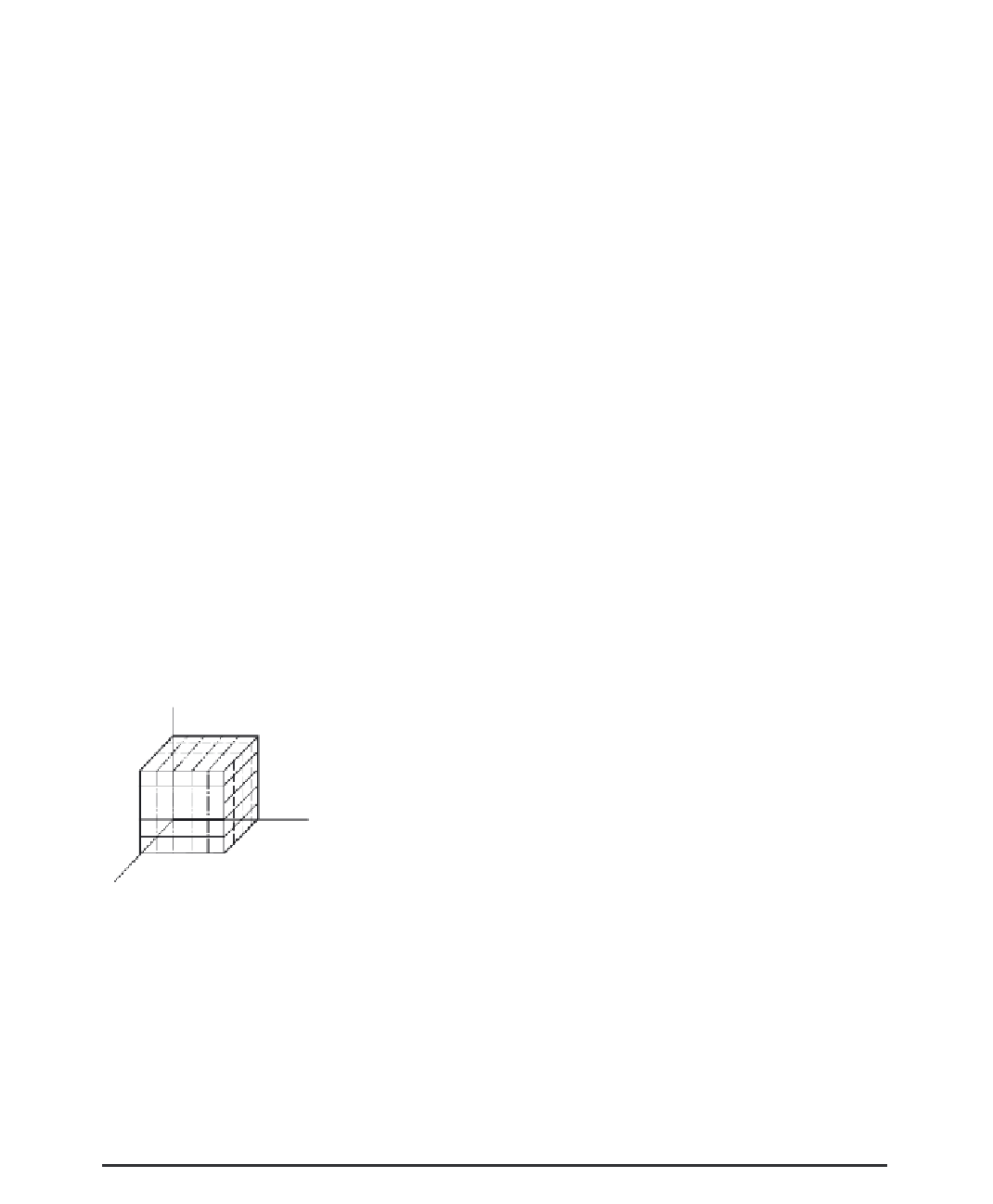Environmental Engineering Reference
In-Depth Information
involving stability after a lapse of many years, the strength of weathered specimens of the
pillar and its roof and floor support pertain.
Typical coals contain a system of orthogonal discontinuities consisting of horizontal
bedding planes and two sets of vertical cracks called “cleats,” which are roughly perpen-
dicular to each other as shown in Figure 10.11. This pattern makes the recovery of undis-
turbed specimens difficult. Some unconfined compression strength values for coals from
various locations are given in
Table 10.2.
Triaxial Compression Tests
A series of triaxial compression tests was performed in the laboratory on specimens from
Eire, Colorado; Sesser, Illinois; and Bruceton, Pennsylvania, by Ko and Gerstle (1973).
Confining pressures of 50, 100, 250, and 600 psi were used, with the maximum pressures
considered as the overburden pressure on a coal seam at a depth of 600 ft. While confining
pressure was held constant, each specimen was loaded axially to failure while strains and
stresses were recorded. The test specimens were oriented on three perpendicular axes (
α
,
), and the failure load was plotted as a function of the confining pressure
P
c
to
obtain the family of curves presented in
Figure 10.12.
It was believed by the investigators that the
proportional limit
represents the load level at
which microcracking commences in the coal. The safe limit is an arbitrary limit on the
applied load set by the investigators to avoid internal microcracking.
β
, and
γ
10.3.5
Investigation of Existing Mines
Data Collection
Collection of existing data is a very important phase of investigation for projects that are
to be constructed over mines. The data should include information on local geology, local
3
Bedding planes
(1
2 plane)
Major cleat
(2
−
3 plane)
Minor cleat
(3
−
FIGURE 10.11
Bedding and cleat orientation of coal and the
principal material axis. (From Ko, A.Y. and Gerstle,
K.H.,
Proceedings of ASCE, 14th Symposium on Rock
Mechanics,
University Park, PA, 1973, pp. 157-188.
With permission.)
−
1 plane)
2
1
TABLE 10.2
Unconfined Compression Strength Values for Coal
Specimen Source
Description
Strength
Comments
Reference
kg/cm
2
South Africa
2 ft cube
19
Failure sudden
Voight and Pariseau (1970)
Not given
Not given
50-500
None
Fanner (1968)
Pittsburgh coal
Sound pillar
∼
57
Pillar with firm bearing.
Greenwald et al. (1941)
H
3 m, sides, 4.8
4.8 m
Anthracite from
1 in. cubes
200,
a
404
a
First crack appears
Mabry (1973) from Griffith
Pennsylvania
Crushing strength
and Conner (1912)
a
Values selected by Mabry (1973), from those obtained during a comprehensive study of the strength of 116
cubic specimens reported by Griffith and Conner (1912).





